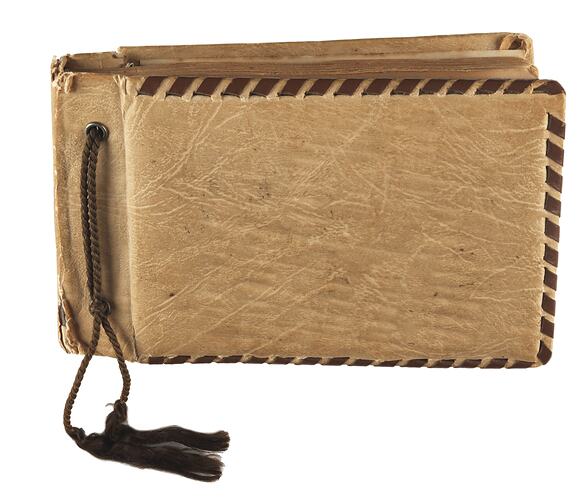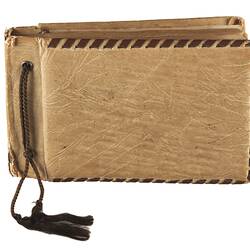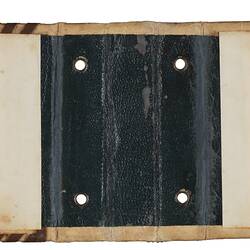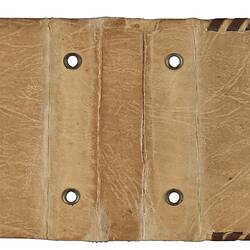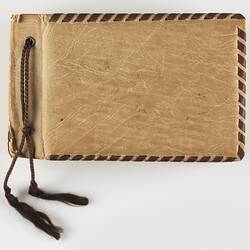Summary
Small album containing a series of 40 black and white photographs which have been adhered to each page. The photographs were taken by Walter Lischke, before, during and just after his migrant voyage to Australia with his wife and four children on the MS Skaubryn in November-December 1955.
The inscription on the inside front cover, handwritten by Walter Lischke in German, reads: 'Unsere Australienfahrt. 26.11 bis 31.12.1955. Unserer lieben Oma!' (Translation: Our journey to Australia. 26.11 until 31.12.1955. To our dear grandmother!'
Walter put the photos in the album after arriving, entitled 'Our Australian Trip 20.11 - 31.12.1955...Our dear grandmother', and sent it back to his wife Gerda's mother in Germany. After she died three years later (which caused Gerda terrible grief), the album came back to the family in Australia. Jutta, the Lischke's eldest child recalls that after her grandmother died: 'My grandmother's few belongings were sent to us, including the piano, letters, a few other minor items and the photo album, which my father made for our grandmother.' (Jutta Iwatschenko nee Lischke written recollections, 21.01.2017) The album, with each photograph annotated in German, commences in Bremerhaven from where the family departed Germany, and follows their their journey to Australia. Also refer to record HT53880, the camera with which Walter Lischke took all the photographs.
Physical Description
Small tan-coloured, leather-bound album with brown string tie at spine. Twenty stiffened card pages with black and white photos (40) adhered to each side.
Significance
Statement of Historical Significance:
This collection provides an evocative insight into one family's post World War II migrant journey, from processing and transport from Bremerhaven, Germany through the ship voyage, ports, arrival and processing at Station Pier, Bonegilla and their early settlement. The photo album compliments other diaries and photo journals in the Museum's collection and demonstrates the importance to migrants of documenting their journey and creating an enduring record of this seminal human experience. The camera with which the photographs were taken is also part of the collection, providing an often rare tangible link between the technology and what it produced and the technological era represented.
More Information
-
Collecting Areas
Migration & Cultural Diversity, Transport, Images & Image Making
-
Acquisition Information
Donation from Sybille Ims, 15 Apr 2015
-
Photographer
Mr Walter Lischke, Melbourne, Victoria, Australia, Nov-Dec 1955
-
Inscriptions
Caption handwritten in German: nsere Australienfahrt. 26.11 bis 31.12.1955. Unserer lieben Oma!'
-
Classification
-
Category
-
Discipline
-
Type of item
-
Overall Dimensions
146 mm (Width), 38 mm (Depth), 90 mm (Height)
Dimensions of photo album
-
Keywords
German Immigration, Migrant Hostels, Migrant Reception Centres, Migrant Workers, Shipboard Travel, Photography, Displaced Persons, Refugees
